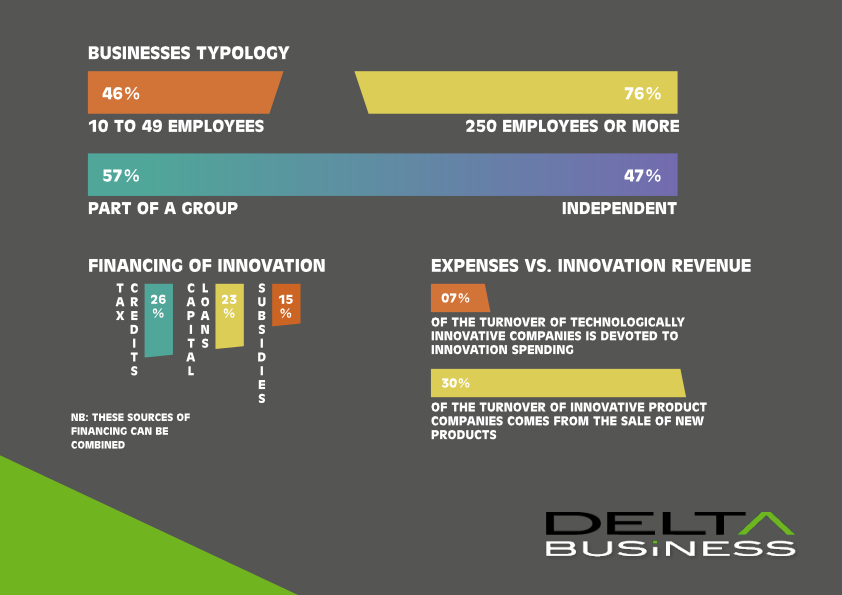Understanding Innovation and its Challenges
Innovation comes in multiple formats: R&D, product innovations - goods and services - or significant improvement of processes, methods (marketing, organization, etc.).
State of innovation in France between 2018 and 2020 (some key indicators - source Ministry of Higher Education and Research).
Innovation: Much more than a Technological Affair
Innovation is often associated with the technological field, but this perception is limited. In reality, innovation transcends borders and extends to all sectors of activity, whether industrial, social, commercial, cultural, or managerial. Whether it is a public, private or associative entity, innovation is present as soon as it generates or disseminates added value.
The diversity of “innovation territories” is therefore wide. It covers in particular the experience, the offer and the organization, but not only:
Experience: Covers different interactions with consumers
Offer: Includes complementary products and services
Brand: Refers to the structure’s image and visibility, and its offers
Channel: Concerns the means of offers’ dissemination
Product Performance: Focuses on differentiating features
Management: Emphasizes alignment between talents and assets
Process: Encompasses optimal methods of production
According to the ISO 56002 standard, innovation corresponds to any “new or modified entity realizing or redistributing value”. Thus, innovation can take different forms and be applied in various contexts.
However, it can be difficult to determine whether a product or service is truly innovative due to the diversity of facets of innovation and the popularity of the term. Once the innovation territory has been identified, it is possible to characterize innovation along two major axes: the market and technology.
Architectural Innovation: It concerns the evolution of uses and the transition to new markets. One example is the introduction of personalized medicines to meet specific patient needs.
Radical Innovation: It consists of marketing completely new products, services or processes that create new uses. Thus, in the field of mobility, Tesla has disrupted the automobile industry with its high-end electric vehicles.
Incremental Innovation: It focuses on improving an existing product or service on the market by adding new features. Terminal electrical equipment is an example, constantly offering new functionalities and combining intelligence with sockets and switches.
Disruptive Innovation: It offers an existing product or service at a lower cost, causing a disruption in the old business model. Uber is one example, disrupting the traditional transportation industry.
In summary, innovation is not limited to a specific field, and its diversity offers numerous opportunities to create value in all sectors of activity. It can be driven by existing or emerging technologies and can revolutionize existing markets or create new ones. The key lies in creativity and the ability to respond to the changing needs of society and the market and even anticipate them.
Follow our LinkedIn page to not miss any article:



